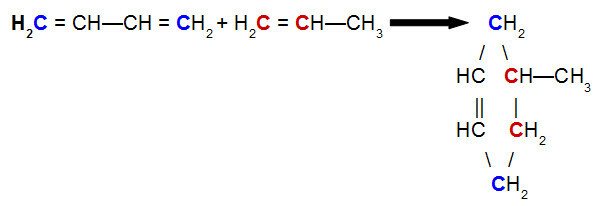O set From numbersrational is formed by all the elements that can be written in the form of fraction. So if the number can be represented by a fraction, then it is a rational number.
To fully understand the definition of numbersrational and all the possibilities that this definition and this setnumeric involve, you must remember the definition of fraction, which will be discussed below.
What is fraction?
One fraction is a division between whole numbers, represented as follows:
The
B
So, for it to be a fraction, the numbers “a” and “b” must be integers and the number “b” will always be non-zero.
Formal definition of rational number
From the definition of fractions, the set of numbersrational can be represented as follows:

In this definition, we say that the set From numbersrational is composed of all fractions of "a" through "b", where "a" is a numberwhole and “b” is a non-zero integer.
Numbers that can be written as a fraction
Knowing that the setFromrational is formed by all numbers that can be written in the form of
fraction, to show that a number is rational, just show that there is a way to write it in that form. The following numbers can be written as a fraction:1 – The fractions themselves
any fraction is a numberrational, as it is naturally already written in the form necessary for this.
2 – Whole numbers
Any numberwhole can be written in the form of fraction. To do so, just divide it by 1, because every number divided by 1 is equal to itself.
The number – 7, for example, is an integer. To write it as a fraction, just do:
– 7
1
Note that all fractions equivalents to this are another way of writing – 7 in fraction form.
3 – Finite decimals
Any decimalfinite, that is, it has a limited number of decimal places, can be written in the form of fraction. For this, just remember that every finite decimal is the result of a division by some power of base 10.
Example: 2.455 is a decimalfinite which has three decimal places. This means that one of the fractions equivalent to it has a denominator equal to 103. This fraction is:
2,455 = 2455
103
In this way, the comma is eliminated and this number is divided by a power of base 10 and an exponent equal to the number of housesdecimals.
4 – Periodic tithes
One titheperiodic is an infinite decimal in which there is a period, that is, a repetition within the decimals. Example:
1,3333….
is titheperiodic of period 3.
1,454545…
is titheperiodic of period 45.
0,4562626262…
is titheperiodic period 62 and antiperiod 45.
A periodic decimal can always be written in the form of fraction. For this, take the example of the 2.565656 tithe…
Note that the period of this tithe is 56, that is, there are two digits in its period. match this tithe to x and multiply this equation by 102. Note that the exponent of the base 10 power will always equal the number of digits in the period.
x = 2.565656…
100x = 256.5656...
Now, subtract the first equation from the second:
100x – x = 256.5656… – 2.565656…
Note that the decimal part to be subtracted is equal, so the decimal parts will result in zero for this subtraction. Soon:
99x = 256 - 2
99x = 254
Solving the equation, we will find the fractiongeneratrix:
99x = 254
x = 254
99
By Luiz Paulo Moreira
Graduated in Mathematics
Source: Brazil School - https://brasilescola.uol.com.br/o-que-e/matematica/o-que-sao-numeros-racionais.htm

